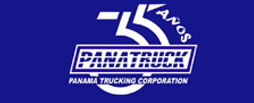Source: IMO
New requirements for fuel oil sampling and testing have entered into force under the MARPOL Convention Annex VI, supporting the implementation and enforcement of the IMO 2020 0.50% limit for sulphur in ships’ fuel oil.
The amendments are intended to support port State control and other environmental authorities, particularly those tasked with fuel sampling and testing, thereby enhancing a global level-playing-field in enforcement of IMO 2020.
The amendments were adopted by the Marine Environment Protection Committee (MEPC 75) in 2020.
Other amendments to MARPOL Annex VI significantly strengthen the Energy Efficiency Design Index (EEDI) “phase 3” requirements, bringing forward the entry into effect date of “phase 3” to 2022, from 2025, for several ship types, including gas carriers, general cargo ships and LNG carriers. This means that new ships-types built from that date must be significantly more energy efficient than the baseline.
Sulphur content definition and sampling:
- Amendments to MARPOL Annex VI Regulation 2 ‘Definitions’, to include new definitions for “Sulphur content of fuel oil” – meaning the concentration of sulphur in any fuel oil, measured in % m/m as tested in accordance with standard acceptable to the Organization; “Low-flashpoint fuel”, to mean gaseous or liquid fuel having a flashpoint lower than otherwise permitted under paragraph 2.1.1 of SOLAS regulation II-2/4; “MARPOL delivered sample”, to mean the sample of fuel oil delivered in accordance with regulation 18.8.1 of MARPOL Annex VI; “In-use sample”, to mean the sample of fuel oil in use on a ship; and “On board sample”, to mean the sample of fuel oil intended to be used or carried for use on board that ship.
- Fuel oil sampling and testing – amendments to Regulation 14 ‘Sulphur oxides (SOX) and particulate matter’, to add new paragraphs related to in-use and onboard fuel oil sampling and testing, to add new paragraphs to require one or more sampling points to be fitted or designated for the purpose of taking representative samples of the fuel oil being used or carried for use on board the ship. The representative samples of the fuel oil being used on board are to be taken in order to verify the fuel oil complies with the regulation.
- Appendix I, amendments to the International Air Pollution Prevention (IAPP) certificate – Consequential amendments to update the IAPP certificate to add a reference to sampling points and also to note where there is an exemption to the provision for low-flashpoint fuel.
- Appendix VI on the Fuel verification procedure for MARPOL Annex VI fuel oil samples – consequential amendments to verification procedures, to cover verification of the representative samples of in-use fuel oil and on board fuel oil.
EEDI amendments
Strengthening the Energy Efficiency Design Index (EEDI) “phase 3” requirements.
- For container ships, the EEDI reduction rate is enhanced, significantly for larger ship sizes, as follows:
- For a containership of 200,000 DWT and above, the EEDI reduction rate is set at 50% from 2022
- For a containership of 120,000 DWT and above but less than 200,000 DWT, 45% from 2022
- For a containership of 80,000 DWT and above but less than 120,000 DWT, 40% from 2022
- For a containership of 40,000 DWT and above but less than 80,000 DWT, 35% from 2022
- For a containership of 15,000 DWT and above but less than 40,000 DWT, 30% from 2022.
![]()

































